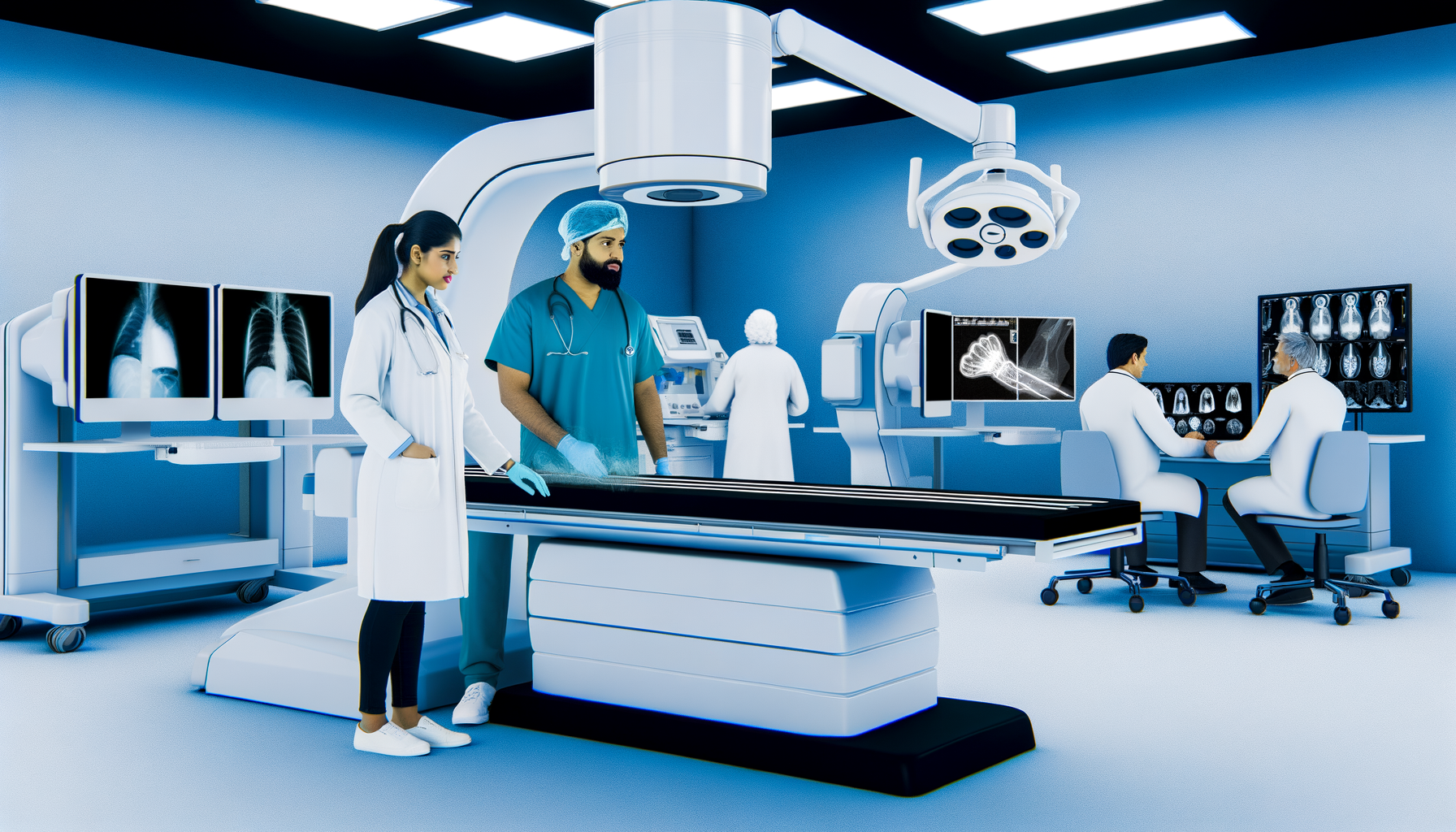Revolutionizing Medical Imaging: The Remote Control Frontier
 Shreya Sulkunde
Shreya Sulkunde
The Silent Revolution: Remote Control Radiography & Fluoroscopy Devices
In an era where medical technology unfurls its transformative potential daily, remote control radiography and fluoroscopy devices have emerged as silent trailblazers in equipping medical practitioners with refined diagnostic capabilities. Over the past decade, the dynamics driving their innovation have undergone rapid augmentation, marked by optimized efficiency, enhanced accuracy, and unprecedented accessibility.
The Technological Leap
Seamless Integration with AI and Machine Learning
Artificial Intelligence (AI) and machine learning have breathed new life into remote radiography and fluoroscopy. AI algorithms analyze a multitude of data points and integrate them with real-time imaging, thereby reducing human error and promoting precision. Machine learning's predictive capabilities allow these devices to learn and adapt to varying conditions, ensuring that each scan or fluoroscopic procedure is as accurate as possible.
The Dawn of Cloud-Based Systems
The advent of cloud technology has been a game-changer. It has seeded an ecosystem wherein patient data, imaging results, and diagnostic reports are quickly archived in centralized digital repositories. This enables radiologists across the globe to access pivotal information in real-time, fostering collaborative consultations and instantaneous second opinions, thus accelerating diagnosis and treatment planning.
Enhancing Accessibility
Portability and Mobility
As technological miniaturization continues, manufacturers have focused on creating compact, portable devices without compromising imaging quality. Their ability to be deployed in diverse settings, from rural clinics to battlefield hospitals, ensures wide accessibility. Moreover, patients with mobility difficulties can benefit from services brought to them in-home setups, making "care delivery on-the-go" a promising prospect.
Telemedicine's Role
Remote diagnostics have been intertwined with telemedicine, breaking geographical barriers to healthcare. Through video calls enhanced with digital imaging, practitioners can diagnose and provide treatments to patients in underserved regions. This telehealth continuum addresses access disparities while reducing the physical footprint in urban clinics.
Enhanced Patient Experience
Patient-Centric Designs
Patient comfort and convenience are paramount. From minimal intrusion during procedures to rapid throughput of exams, these devices are designed with the patient in mind. Technological innovations focus on reducing exposure times and improving image clarity, promising safer and friendlier experiences — crucial demographics, particularly pediatric or elderly patients, who may harbor anxieties around imaging.
Data Ownership and Transparency
Empowered patients demand transparency. Devices now allow patients to access their imaging portfolios through secure portals, promoting proactive health management. This transparency builds trust between patients and healthcare providers, cementing a partnership crucial for effective healthcare delivery.
Financial Viability & Sustainability
Reducing Healthcare Costs
Lastly, the decreasing costs of remote control radiography and fluoroscopy devices herald a broader deployment in healthcare facilities, reducing the dependency on centralized radiology departments that often entail higher operational costs. Consequently, imaging has become affordable and immensely scalable.
These devices prioritize low power consumption and optimize energy output, dovetailing with broader movements towards sustainable healthcare. It not only reduces the carbon footprint of medical establishments but also pioneers a blueprint for eco-conscious healthcare innovations.
Navigating Challenges
Training and Adaptation
While technology progresses at a neck-breaking pace, a bottleneck lies in adequately training personnel to operate intricate technology proficiently. Investing in continuous training and development for existing and future medical staff ensures the safe adoption of these advanced tools.
Data Privacy and Security
With expanded connectivity comes the heightened risk of data breaches. Enabling robust cybersecurity frameworks, strong encryption standards, and data anonymization is crucial to preserving patient confidentiality and trust.
Looking Ahead
The progression of remote control radiography and fluoroscopy devices symbolizes more than just innovation; it's a paradigm shift towards making precise, rapid, and efficient healthcare ubiquitous. With continued collaborative efforts between technology developers, healthcare providers, and legislators, the horizon beams bright, promising a future where such innovations become mainstays rather than marvels.
In embracing these innovations, the realm of healthcare stands not just on the cusp of a breakthrough but on the very shoulders of transformative revolution. The true essence lies not just in technology but in its profound ability to touch lives, transcend borders, and redefine the medical landscape.
Explore Comprehensive Market Analysis of Remote Control Radiography & Fluoroscopy Devices Market
Source - @360iResearch
Subscribe to my newsletter
Read articles from Shreya Sulkunde directly inside your inbox. Subscribe to the newsletter, and don't miss out.
Written by
